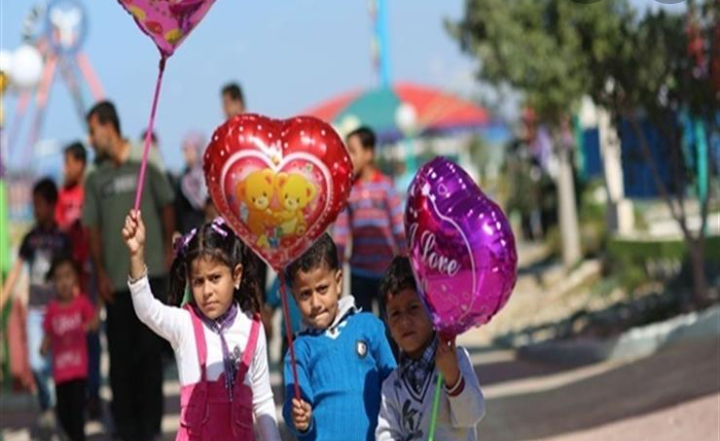Introduction to Islam
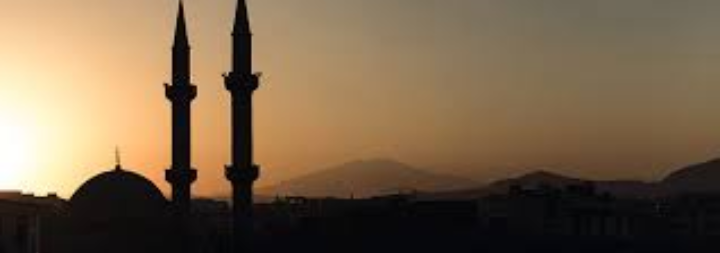
Islam, major world religion promulgated by the Prophet Muhammad in Arabia in the 7th century CE. The Arabic term islām, literally “surrender,” illuminates the fundamental religious idea of Islam—that the believer (called a Muslim, from the active particle of islām) accepts surrender to the will of Allah (in Arabic, Allāh: God). Allah is viewed as the sole God—creator, sustainer, and restorer of the world. The will of Allah, to which human beings must submit, is made known through the sacred scriptures, the Qurʾān (often spelled Koran in English), which Allah revealed to his messenger, Muhammad. In Islam Muhammad is considered the last of a series of prophets (including Adam, Noah, Abraham, Moses, Solomon, and Jesus), and his message simultaneously consummates and completes the “revelations” attributed to earlier prophets.

Retaining its emphasis on an uncompromising monotheism and a strict adherence to certain essential religious practices, the religion taught by Muhammad to a small group of followers spread rapidly through the Middle East to Africa, Europe, the Indian subcontinent, the Malay Peninsula, and China. By the early 21st century there were more than 1.5 billion Muslims worldwide. Although many sectarian movements have arisen within Islam, all Muslims are bound by a common faith and a sense of belonging to a single community.
The Prophet Muhammad
Muhammad was the founder of Islam and the proclaimer of the Qurʾān, Islam’s sacred scripture. He spent his entire life in what is now the country of Saudi Arabia, from his birth about 570 CE in Mecca to his death in 632 in Medina. According to Islamic tradition, the Qurʾān, understood as a literal transcription of the speech of God (Allah), was revealed to Muhammad in stages by the archangel Gabriel, beginning in 610.

The rise of Islam is intrinsically linked with the Prophet Muhammad, believed by Muslims to be the last in a long line of prophets that includes Moses and Jesus. Because Muhammad was the chosen recipient and messenger of the word of God through the divine revelations, Muslims from all walks of life strive to follow his example. After the holy Qur'an, the sayings of the Prophet (hadith) and descriptions of his way of life (sunna) are the most important Muslim texts.
Muhammad's early Life
Muhammad was born into the most powerful tribe in Mecca, the Quraish, around 570 A.D. The power of the Quraish derived from their role as successful merchants. Several trade routes intersected at Mecca, allowing the Quraish to control trade along the west coast of Arabia, north to Syria, and south to Yemen.
Mecca was home to two widely venerated polytheistic cults whose gods were thought to protect its lucrative trade. After working for several years as a merchant, Muhammad was hired by Khadija, a wealthy widow, to ensure the safe passage of her caravans to Syria. They eventually married.

The beginning of Divine Revelations
When he was roughly forty, Muhammad began having visions and hearing voices. Searching for clarity, he would sometimes meditate at Mount Hira, near Mecca. On one of these occasions, the Archangel Gabriel (Jibra'il in Arabic) appeared to him and instructed him to recite "in the name of [your] lord." This was the first of many revelations that became the basis of the Qur'an, the holy book of Islam. These early revelations pointed to the existence of a single God, contradicting the polytheistic beliefs of the pre-Islamic Arabian Peninsula.
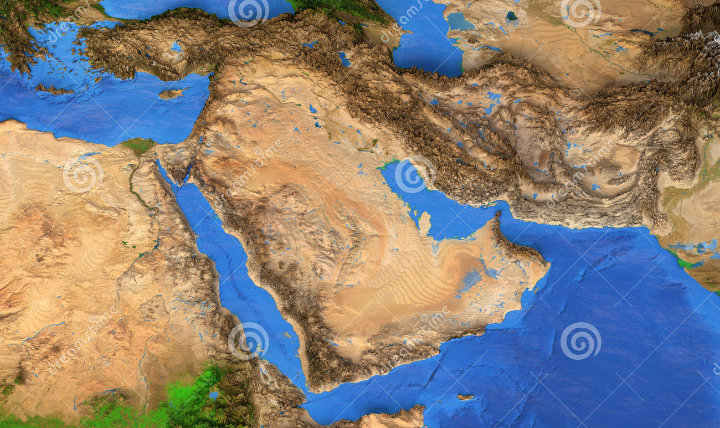
Initially overwhelmed by the significance of what was being revealed to him, Muhammad found unflinching support in his wife and slowly began to attract followers. His strong monotheistic message angered many of the Meccan merchants. They were afraid that trade, which they believed was protected by the pagan gods, would suffer. From that point forward, Muhammad was ostracized in Mecca. For a time, the influence and status of his wife and his uncle, Abu Talib, the chief of the clan, protected Muhammad from persecution. After they died, however, Muhammad's situation in Mecca became dire.
The Hijra to Medina

Emigration became the only hope for Muhammad and his followers' survival. In 622, they headed to Medina, another oasis town, where they were promised freedom to practice their religion. The move from Mecca to Medina is known as the hijra—the flight—and marks year 1 of the Islamic, or hijri, calendar.
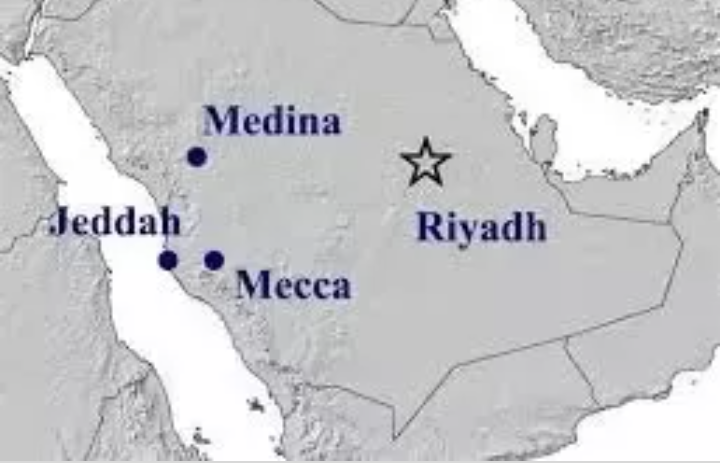
Spreading the Message of Islam
In Medina, Muhammad continued to receive divine revelations and built an ever-expanding community around the new faith. The conflict with the Quraish continued, but after several years of violent clashes, Mecca surrendered. Muhammad and his followers soon returned and took over the city, destroying all its pagan idols and spreading their belief in one God.

The Night Journey and Ascension of the Prophet
Accounts of the ascension (mi'raj ) of Muhammad have captured the imaginations of writers and painters for centuries. One night, while the Prophet was sleeping, the Archangel Gabriel came and led him on a journey. Mounted on the heavenly steed Buraq, Muhammad traveled from the Ka'ba in Mecca to the "Farthest Mosque," which Muslims believe to be the Al-Aqsa Mosque in Jerusalem. There he prayed with other prophets such as Moses, Abraham, and Jesus, and ascended to the skies, where he was led by Gabriel through Paradise and Hell, and finally came face to face with God. He then returned to earth to continue spreading the message of Islam. According to Islamic belief, Muhammad was the only person to see Heaven and Hell while still alive.

The Foundations Of Islam
From the very beginning of Islam, Muhammad had inculcated a sense of brotherhood and a bond of faith among his followers, both of which helped to develop among them a feeling of close relationship that was accentuated by their experiences of persecution as a nascent community in Mecca. The strong attachment to the tenets of the Qurʾānic revelation and the conspicuous socioeconomic content of Islamic religious practices cemented this bond of faith. In 622 CE, when the Prophet migrated to Medina, his preaching was soon accepted, and the community-state of Islam emerged. During this early period, Islam acquired its characteristic ethos as a religion uniting in itself both the spiritual and temporal aspects of life and seeking to regulate not only the individual’s relationship to God (through conscience) but human relationships in a social setting as well. Thus, there is not only an Islamic religious institution but also an Islamic law, state, and other institutions governing society. Not until the 20th century were the religious (private) and the secular (public) distinguished by some Muslim thinkers and separated formally in certain places such as Turkey.

This dual religious and social character of Islam, expressing itself in one way as a religious community commissioned by God to bring its own value system to the world through the jihād (“exertion,” commonly translated as “holy war” or “holy struggle”), explains the astonishing success of the early generations of Muslims. Within a century after the Prophet’s death in 632 CE, they had brought a large part of the globe—from Spain across Central Asia to India—under a new Arab Muslim empire.

The period of Islamic conquests and empire building marks the first phase of the expansion of Islam as a religion. Islam’s essential egalitarianism within the community of the faithful and its official discrimination against the followers of other religions won rapid converts. Jews and Christians were assigned a special status as communities possessing scriptures and were called the “people of the Book” (ahl al-kitāb) and, therefore, were allowed religious autonomy. They were, however, required to pay a per capita tax called jizyah, as opposed to pagans, who were required to either accept Islam or die. The same status of the “people of the Book” was later extended in particular times and places to Zoroastrians and Hindus, but many “people of the Book” joined Islam in order to escape the disability of the jizyah. A much more massive expansion of Islam after the 12th century was inaugurated by the Sufis (Muslim mystics), who were mainly responsible for the spread of Islam in India, Central Asia, Turkey, and sub-Saharan Africa
Beside the jihad and Sufi missionary activity, another factor in the spread of Islam was the far-ranging influence of Muslim traders, who not only introduced Islam quite early to the Indian east coast and South India but also proved to be the main catalytic agents (beside the Sufis) in converting people to Islam in Indonesia, Malaya, and China. Islam was introduced to Indonesia in the 14th century, hardly having time to consolidate itself there politically before the region came under Dutch hegemony.
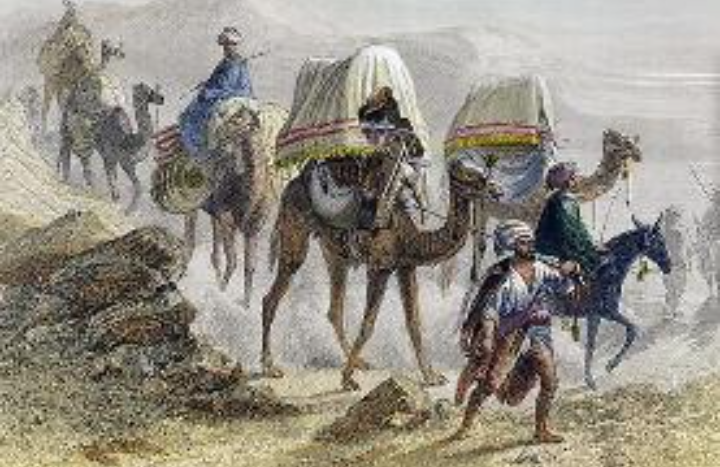
The vast variety of races and cultures embraced by Islam (an estimated total of more than 1.5 billion persons worldwide in the early 21st century) has produced important internal differences. All segments of Muslim society, however, are bound by a common faith and a sense of belonging to a single community. With the loss of political power during the period of Western colonialism in the 19th and 20th centuries, the concept of the Islamic community (ummah), instead of weakening, became stronger. The faith of Islam helped various Muslim peoples in their struggle to gain political freedom in the mid-20th century, and the unity of Islam contributed to later political solidarity.

Sources of Islamic doctrinal and social views
Islamic doctrine, law, and thinking in general are based upon four sources, or fundamental principles (uṣūl): (1) the Islam’s holy book written as Koran, Kur’an, Quran, Qur’an, Coran, etc, (2) the Sunnah (“Traditions”), (3) ijmāʿ (“consensus”), and (4) ijtihād (“individual thought”).

The Qurʾān (literally, “reading” or “recitation”) is regarded as the verbatim word, or speech, of God delivered to Muhammad by the archangel Gabriel. Divided into 114 suras (chapters) of unequal length, it is the fundamental source of Islamic teaching. The suras revealed at Mecca during the earliest part of Muhammad’s career are concerned mostly with ethical and spiritual teachings and the Day of Judgment. The suras revealed at Medina at a later period in the career of the Prophet are concerned for the most part with social legislation and the politico-moral principles for constituting and ordering the community.

Sunnah(“a well-trodden path”) was used by pre-Islamic Arabs to denote their tribal or common law. In Islam it came to mean the example of the Prophet—i.e., his words and deeds as recorded in compilations known as Hadith (in Arabic, Ḥadīth: literally, “report”; a collection of sayings attributed to the Prophet). Hadith provide the written documentation of the Prophet’s words and deeds. Six of these collections, compiled in the 3rd century AH (9th century CE), came to be regarded as especially authoritative by the largest group in Islam, the Sunnis. Another large group, the Shiʿah, has its own Hadith contained in four canonical collections.

saheeh albukhary
The doctrine of ijmāʿ, or consensus, was introduced in the 2nd century AH (8th century CE) in order to standardize legal theory and practice and to overcome individual and regional differences of opinion. Though conceived as a “consensus of scholars,” ijmāʿ was in actual practice a more fundamental operative factor. From the 3rd century AH ijmāʿ has amounted to a principle of stability in thinking; points on which consensus was reached in practice were considered closed and further substantial questioning of them prohibited. Accepted interpretations of the Qurʾān and the actual content of the Sunnah (i.e., Hadith and theology) all rest finally on the ijmāʿ in the sense of the acceptance of the authority of their community.
Ijtihād, meaning “to endeavour” or “to exert effort,” was required to find the legal or doctrinal solution to a new problem. In the early period of Islam, because ijtihād took the form of individual opinion (raʾy), there was a wealth of conflicting and chaotic opinions. In the 2nd century AH ijtihād was replaced by qiyās (reasoning by strict analogy), a formal procedure of deduction based on the texts of the Qurʾān and the Hadith. The transformation of ijmāʿ into a conservative mechanism and the acceptance of a definitive body of Hadith virtually closed the “gate of ijtihād” in Sunni Islam while ijtihād continued in Shiʿism. Nevertheless, certain outstanding Muslim thinkers (e.g., al-Ghazālī in the 11th–12th century) continued to claim the right of new ijtihād for themselves, and reformers in the 18th–20th centuries, because of modern influences, caused this principle once more to receive wider acceptance.
God (Allah)
The doctrine about God in the Qurʾān is rigorously monotheistic: God is one and unique; he has no partner and no equal. Trinitarianism, the Christian belief that God is three persons in one substance, is vigorously repudiated. Muslims believe that there are no intermediaries between God and the creation that he brought into being by his sheer command, “Be.” Although his presence is believed to be everywhere, he is not incarnated in anything. He is the sole creator and sustainer of the universe, wherein every creature bears witness to his unity and lordship. But he is also just and merciful: his justice ensures order in his creation, in which nothing is believed to be out of place, and his mercy is unbounded and encompasses everything. His creating and ordering the universe is viewed as the act of prime mercy for which all things sing his glories. The God of the Qurʾān, described as majestic and sovereign, is also a personal God; he is viewed as being nearer to one than one’s own jugular vein, and, whenever a person in need or distress calls him, he responds. Above all, he is the God of guidance and shows everything, particularly humanity, the right way, “the straight path.”
This picture of God—wherein the attributes of power, justice, and mercy interpenetrate—is related to the concept of God shared by Judaism and Christianity and also differs radically from the concepts of pagan Arabia, to which it provided an effective answer. The pagan Arabs believed in a blind and inexorable fate over which humans had no control. For this powerful but insensible fate the Qurʾān substituted a powerful but provident and merciful God. The Qurʾān carried through its uncompromising monotheism by rejecting all forms of idolatry and eliminating all gods and divinities that the Arabs worshipped in their sanctuaries (ḥarams), the most prominent of which was the Kaʿbah sanctuary in Mecca itself.
The universe
In order to prove the unity of God, the Qurʾān lays frequent stress on the design and order in the universe. There are no gaps or dislocations in nature. Order is explained by the fact that every created thing is endowed with a definite and defined nature whereby it falls into a pattern. This nature, though it allows every created thing to function in a whole, sets limits, and this idea of the limitedness of everything is one of the most fixed points in both the cosmology and theology of the Qurʾān. The universe is viewed, therefore, as autonomous, in the sense that everything has its own inherent laws of behaviour, but not as autocratic, because the patterns of behaviour have been endowed by God and are strictly limited. “Everything has been created by us according to a measure.” Though every creature is thus limited and “measured out” and hence depends upon God, God alone, who reigns unchallenged in the heavens and the earth, is unlimited, independent, and self-sufficient.
Humanity
According to the Qurʾān, God created two apparently parallel species of creatures, human beings and jinn, the one from clay and the other from fire. About the jinn, however, the Qurʾān says little, although it is implied that the jinn are endowed with reason and responsibility but are more prone to evil than human beings are. It is with humanity that the Qurʾān, which describes itself as a guide for the human race, is centrally concerned. The story of the Fall of Adam (the first man) promoted in Judaism and Christianity is accepted, but the Qurʾān states that God forgave Adam his act of disobedience, which is not viewed in the Qurʾān as original sin in the Christian sense of the term.
In the story of the creation of humanity, Iblīs, or Satan, who protested to God against the creation of human beings, because they “would sow mischief on earth,” lost in the competition of knowledge against Adam. The Qurʾān, therefore, declares humanity to be the noblest of all creation, the created being who bore the trust (of responsibility) that the rest of creation refused to accept. The Qurʾān thus reiterates that all nature has been made subservient to humans, who are seen as God’s vice-regent on earth; nothing in all creation has been made without a purpose, and humanity itself has not been created “in sport” but rather has been created with the purpose of serving and obeying God’s will.
Despite this lofty station, however, the Qurʾān describes human nature as frail and faltering. Whereas everything in the universe has a limited nature and every creature recognizes its limitation and insufficiency, human beings are viewed as having been given freedom and therefore are prone to rebelliousness and pride, with the tendency to arrogate to themselves the attributes of self-sufficiency. Pride, thus, is viewed as the cardinal sin of human beings, because, by not recognizing in themselves their essential creaturely limitations, they become guilty of ascribing to themselves partnership with God (shirk: associating a creature with the Creator) and of violating the unity of God. True faith (īmān), thus, consists of belief in the immaculate Divine Unity and islām (surrender) in one’s submission to the Divine Will.
Satan, sin, and repentance
In order to communicate the truth of Divine Unity, God has sent messengers or prophets to human beings, whose weakness of nature makes them ever prone to forget or even willfully to reject Divine Unity under the promptings of Satan. According to the Qurʾānic teaching, the being who became Satan (Shayṭān or Iblīs) had previously occupied a high station but fell from divine grace by his act of disobedience in refusing to honour Adam when he was ordered to do so. Since then his work has been to beguile human beings into error and sin. Satan is, therefore, the contemporary of humanity, and Satan’s own act of disobedience is construed by the Qurʾān as the sin of pride. Satan’s machinations will cease only on the Last Day.
Judging from the accounts of the Qurʾān, the record of humanity’s acceptance of the prophets’ messages has been far from perfect. The whole universe is replete with signs of God. The human soul itself is viewed as a witness of the unity and grace of God. The messengers of God have, throughout history, been calling humanity back to God. Yet not all people have accepted the truth; many of them have rejected it and become disbelievers (kāfir, plural kuffār; literally, “concealing”—i.e., the blessings of God), and, when a person becomes so obdurate, his heart is sealed by God. Nevertheless, it is always possible for a sinner to repent (tawbah) and redeem himself by a genuine conversion to the truth. There is no point of no return, and God is forever merciful and always willing and ready to pardon. Genuine repentance has the effect of removing all sins and restoring a person to the state of sinlessness with which he started his life.
Prophecy
Prophets are men specially elected by God to be his messengers. Prophethood is indivisible, and the Qurʾān requires recognition of all prophets as such without discrimination. Yet they are not all equal, some of them being particularly outstanding in qualities of steadfastness and patience under trial. Abraham, Noah, Moses, and Jesus were such great prophets. As vindication of the truth of their mission, God often vests them with miracles: Abraham was saved from fire, Noah from the Deluge, and Moses from the pharaoh. Not only was Jesus born from the Virgin Mary, but God also saved him from crucifixion at the hands of the Jews. The conviction that God’s messengers are ultimately vindicated and saved is an integral part of the Qurʾānic doctrine.
All prophets are human and never part of divinity: they are the most perfect of humans who are recipients of revelation from God. When God wishes to speak to a human, he sends an angel messenger to him or makes him hear a voice or inspires him. Muhammad is accepted as the last prophet in this series and its greatest member, for in him all the messages of earlier prophets were consummated. The archangel Gabriel brought the Qurʾān down to the Prophet’s “heart.” Gabriel is represented by the Qurʾān as a spirit whom the Prophet could sometimes see and hear. According to early traditions, the Prophet’s revelations occurred in a state of trance when his normal consciousness was transformed. This state was accompanied by heavy sweating. The Qurʾān itself makes it clear that the revelations brought with them a sense of extraordinary weight: “If we were to send this Qurʾān down on a mountain, you would see it split asunder out of fear of God.”
This phenomenon at the same time was accompanied by an unshakable conviction that the message was from God, and the Qurʾān describes itself as the transcript of a heavenly “Mother Book” written on a “Preserved Tablet.” The conviction was of such an intensity that the Qurʾān categorically denies that it is from any earthly source, for in that case it would be liable to “manifold doubts and oscillations.”
Eschatology (doctrine of last things)
In Islamic doctrine, on the Last Day, when the world will come to an end, the dead will be resurrected and a judgment will be pronounced on every person in accordance with his deeds. Although the Qurʾān in the main speaks of a personal judgment, there are several verses that speak of the resurrection of distinct communities that will be judged according to “their own book.” In conformity with this, the Qurʾān also speaks in several passages of the “death of communities,” each one of which has a definite term of life. The actual evaluation, however, will be for every individual, whatever the terms of reference of his performance. In order to prove that the resurrection will occur, the Qurʾān uses a moral and a physical argument. Because not all requital is meted out in this life, a final judgment is necessary to bring it to completion. Physically, God, who is all-powerful, has the ability to destroy and bring back to life all creatures, who are limited and are, therefore, subject to God’s limitless power.
Some Islamic schools deny the possibility of human intercession but most accept it, and in any case God himself, in his mercy, may forgive certain sinners. Those condemned will burn in hellfire, and those who are saved will enjoy the abiding joys of paradise. Hell and heaven are both spiritual and corporeal. Beside suffering in physical fire, the damned will also experience fire “in their hearts.” Similarly, the blessed will experience, besides corporeal enjoyment, the greatest happiness of divine pleasure.
Fundamental practices and institutions of Islam
The five pillars
During the earliest decades after the death of the Prophet, certain basic features of the religio-social organization of Islam were singled out to serve as anchoring points of the community’s life and formulated as the “Pillars of Islam.” To these five, the Khārijite sect added a sixth pillar, the jihad, which, however, was not accepted by the general community.
The shahādah, or profession of faith
The first pillar is the profession of faith: “There is no deity but God, and Muhammad is the messenger of God,” upon which depends membership in the community. The profession of faith must be recited at least once in one’s lifetime, aloud, correctly, and purposively, with an understanding of its meaning and with an assent from the heart. From this fundamental belief are derived beliefs in (1) angels (particularly Gabriel, the Angel of Inspiration), (2) the revealed Book (the Qurʾān and the sacred books of Judaism and Christianity), (3) a series of prophets (among whom figures of Jewish and Christian tradition are particularly eminent, although it is believed that God has sent messengers to every nation), and (4) the Last Day (Day of Judgment).
Prayers
The second pillar consists of five daily canonical prayers. These prayers may be offered individually if one is unable to go to the mosque. The first prayer is performed before sunrise, the second just after noon, the third in the late afternoon, the fourth immediately after sunset, and the fifth before retiring to bed.
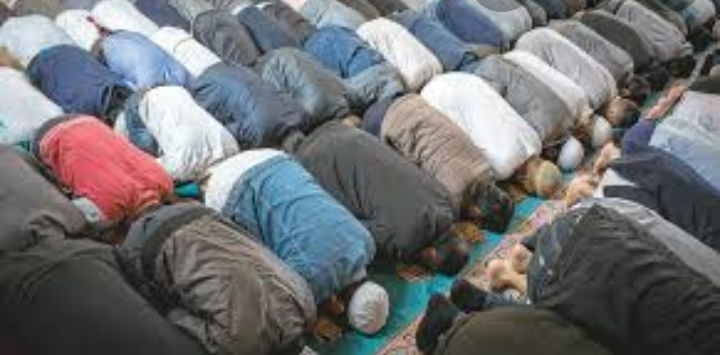
Before a prayer, ablutions are performed (do wudu), including the washing of hands, face, and feet. The muezzin (one who gives the call for prayer) chants aloud from a raised place (such as a tower) in the mosque. When prayer starts, the imam, or leader (of the prayer), stands in the front facing in the direction of Mecca, and the congregation stands behind him in rows, following him in various postures. Each prayer consists of two to four genuflection units (rakʿah); each unit consists of a standing posture (during which verses from the Qurʾān are recited—in certain prayers aloud, in others silently), as well as a genuflection and two prostrations. At every change in posture, “God is great” is recited. Tradition has fixed the materials to be recited in each posture.

Special congregational prayers are offered on Friday instead of the prayer just after noon. The Friday service consists of a sermon (khuṭbah), which partly consists of preaching in the local language and partly of recitation of certain formulas in Arabic. In the sermon, the preacher usually recites one or several verses of the Qurʾān and builds his address on it, which can have a moral, social, or political content. Friday sermons usually have considerable impact on public opinion regarding both moral and sociopolitical questions.
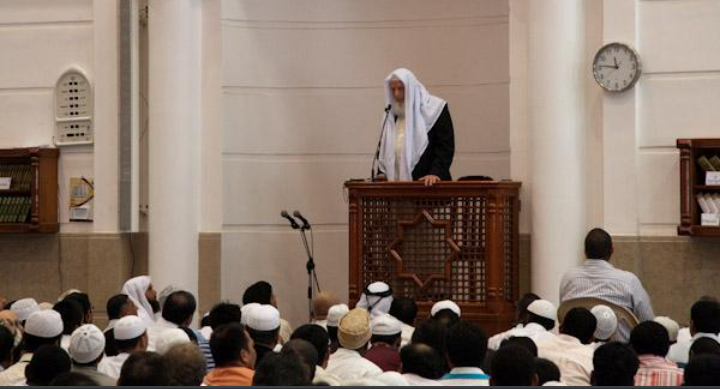
Although not ordained as an obligatory duty, nocturnal prayers (called tahajjud) are encouraged, particularly during the latter half of the night. During the month of Ramadan, lengthy prayers called tarāwīḥ are offered congregationally before retiring.
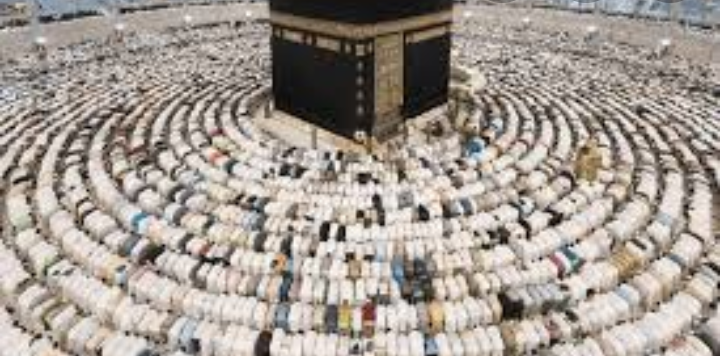
In strict doctrine, the five daily prayers cannot be waived even for the sick, who may pray in bed and, if necessary, lying down. When on a journey, the two afternoon prayers may be followed one by the other; the sunset and late evening prayers may be combined as well. In practice, however, much laxity has occurred, particularly among the modernized classes, although Friday prayers are still very well attended.
The zakat
The third pillar is the obligatory tax called zakāt (“purification,” indicating that such a payment makes the rest of one’s wealth religiously and legally pure). This is the only permanent tax levied by the Qurʾān and is payable annually on food grains, cattle, and cash after one year’s possession. The amount varies for different categories. Thus, on grains and fruits it is 10 percent if land is watered by rain, 5 percent if land is watered artificially. On cash and precious metals it is 2.5 percent. Zakāt is collectable by the state and is to be used primarily for the poor, but the Qurʾān mentions other purposes: ransoming Muslim war captives, redeeming chronic debts, paying tax collectors’ fees, jihad (and by extension, according to Qurʾān commentators, education and health), and creating facilities for travelers.

After the breakup of Muslim religio-political power, payment of zakāt became a matter of voluntary charity dependent on individual conscience. In the modern Muslim world it has been left up to the individual, except in some countries (such as Saudi Arabia) where the Sharīʿah (Islamic law) is strictly maintained.
Fasting
Fasting during the month of Ramadan (ninth month of the Muslim lunar calendar), laid down in the Qurʾān (2:183–185), is the fourth pillar of the faith. Fasting begins at daybreak and ends at sunset, and during the day eating, drinking, and smoking are forbidden. The Qurʾān (2:185) states that it was in the month of Ramadan that the Qurʾān was revealed. Another verse of the Qurʾān (97:1) states that it was revealed “on the Night of Power,” which Muslims generally observe on one of the last 10 nights of Ramadan (usually the 27th night). For a person who is sick or on a journey, fasting may be postponed until “another equal number of days.” The elderly and the incurably sick are exempted through the daily feeding of one poor person if they have the means.

The hajj
The fifth pillar is the annual pilgrimage (hajj) to Mecca prescribed for every Muslim once in a lifetime—“provided one can afford it” and provided a person has enough provisions to leave for his family in his absence. A special service is held in the sacred mosque on the 7th of the month of Dhū al-Ḥijjah (last in the Muslim year). Pilgrimage activities begin by the 8th and conclude on the 12th or 13th. All worshippers enter the state of iḥrām; they wear two seamless garments and avoid sexual intercourse, the cutting of hair and nails, and certain other activities. Pilgrims from outside Mecca assume iḥrām at specified points en route to the city. The principal activities consist of walking seven times around the Kaʿbah, a shrine within the mosque; the kissing and touching of the Black Stone (Ḥajar al-Aswad); and the ascent of and running between Mount Ṣafā and Mount Marwah (which are now, however, mere elevations) seven times. At the second stage of the ritual, the pilgrim proceeds from Mecca to Minā, a few miles away; from there he goes to ʿArafāt, where it is essential to hear a sermon and to spend one afternoon. The last rites consist of spending the night at Muzdalifah (between ʿArafāt and Minā) and offering sacrifice on the last day of iḥrām, which is the ʿīd (“festival”) of sacrifice. See Eid al-Adha.
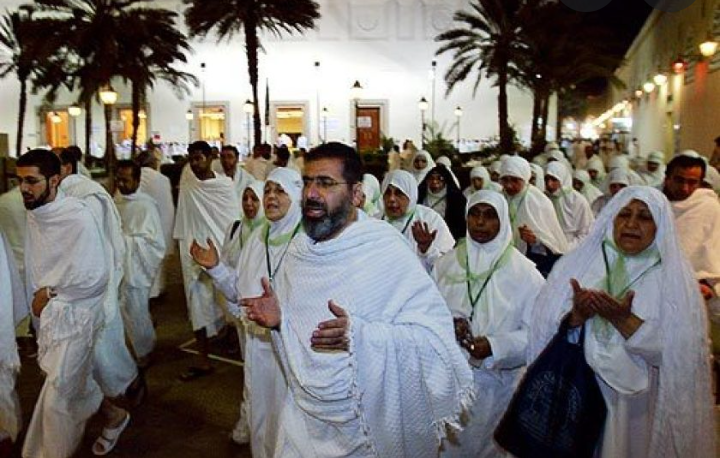
Many countries have imposed restrictions on the number of outgoing pilgrims because of foreign-exchange difficulties. Because of the improvement of communications, however, the total number of visitors has greatly increased in recent years. By the early 21st century the number of annual visitors was estimated to exceed two million, approximately half of them from non-Arab countries. All Muslim countries send official delegations on the occasion, which is being increasingly used for religio-political congresses. At other times in the year, it is considered meritorious to perform the lesser pilgrimage (ʿumrah), which is not, however, a substitute for the hajj pilgrimage.
Holy places and days
The most sacred place for Muslims is the Kaʿbah sanctuary at Mecca, the object of the annual pilgrimage. It is much more than a mosque; it is believed to be the place where the heavenly bliss and power touches the earth directly. According to Muslim tradition, the Kaʿbah was built by Abraham. The Prophet’s mosque in Medina is the next in sanctity. Jerusalem follows in third place in sanctity as the first qiblah (i.e., direction in which the Muslims offered prayers at first, before the qiblah was changed to the Kaʿbah) and as the place from where Muhammad, according to tradition, made his ascent (miʿrāj) to heaven. For the Shiʿah, Karbalāʾ in Iraq (the place of martyrdom of ʿAlī’s son Ḥusayn) and Meshed in Iran (where Imām ʿAlī al-Riḍā is buried) constitute places of special veneration where Shiʿis make pilgrimages.
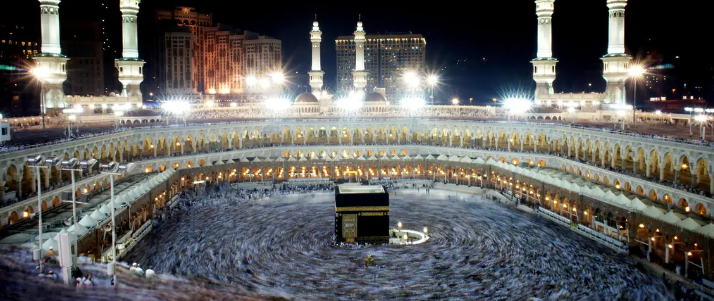
Shrines of Sufi saints
For the Muslim masses in general, shrines of Sufi saints are particular objects of reverence and even veneration. In Baghdad the tomb of the greatest saint of all, ʿAbd al-Qādir al-Jīlānī, is visited every year by large numbers of pilgrims from all over the Muslim world.
By the late 20th century the Sufi shrines, which were managed privately in earlier periods, were almost entirely owned by governments and were managed by departments of awqāf (plural of waqf, a religious endowment). The official appointed to care for a shrine is usually called a mutawallī. In Turkey, where such endowments formerly constituted a very considerable portion of the national wealth, all endowments were confiscated by the regime of Atatürk (president 1928–38).
The Masjed (mosque)
The general religious life of Muslims is centred around the Masjed. In the days of the Prophet and early caliphs, the Masjed was the centre of all community life, and it remains so in many parts of the Islamic world to this day. Small Masjeds are usually supervised by the imam (one who administers the prayer service) himself, although sometimes also a muezzin is appointed. In larger Masjeds, where Friday prayers are offered, a khaṭīb (one who gives the khuṭbah, or sermon) is appointed for Friday service. Many large Masjeds also function as religious schools and colleges. In the early 21st century, Masjed officials were appointed by the government in most countries. In some countries—e.g., Pakistan—most Masjeds are private and are run by the local community, although increasingly some of the larger ones have been taken over by the government departments of awqāf.

Holy days
The Muslim calendar (based on the lunar year) dates from the emigration (hijrah) of the Prophet from Mecca to Medina in 622. The two festive days in the year are the Eids (ʿīds), Eid al-Fitr, which celebrates the end of the month of Ramadan, and Eid al-Adha (the feast of sacrifice), which marks the end of the hajj. Because of the crowds, Eid prayers are offered either in very large mosques or on specially consecrated grounds. Other sacred times include the “Night of Power” (Laylat al-Qadr; believed to be the night in which God makes decisions about the destiny of individuals and the world as a whole) and the night of the ascension of the Prophet to heaven. The Shiʿis celebrate the 10th of Muḥarram (the first month of the Muslim year) to mark the day of the martyrdom of Ḥusayn. The Muslim masses also celebrate the death anniversaries of various saints in a ceremony called ʿurs (literally, “nuptial ceremony”). The saints, far from dying, are believed to reach the zenith of their spiritual life on this occasion.
